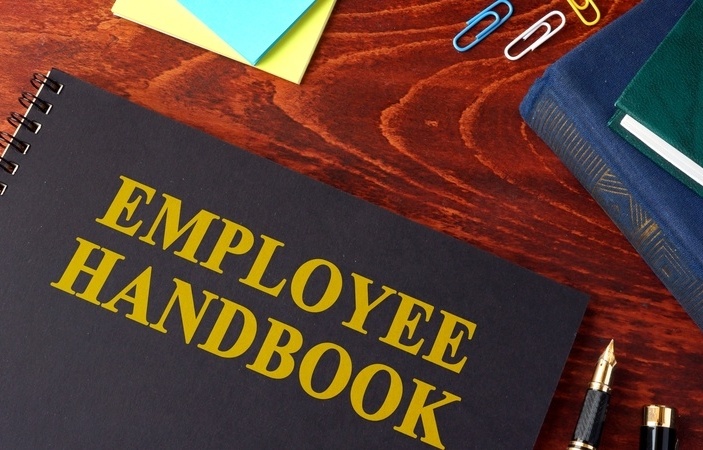| "Ask the Experts" guest blog content provided to Q4iNetwork Consultants by Think HR |  |
Question: We are a growing company and this will be our first employee handbook. What types of policies do we need to consider as we put our handbook together?
Answer: While handbooks are not required by law, they are a great tool for educating employees as to what is expected of them and what they can expect from the company, as well as providing a roadmap for behavior and performance within the company. Handbooks can also help employers minimize their exposure to claims of harassment, discrimination, wrongful termination, invasion of privacy, and other claims. Be sure to tell the story of your company and let employees know they are a valued part of the organization. By providing employees with a general overview of workplace policies and procedures and outlining the tools to help them manage their employee life cycle events, employee handbooks serve as an important communications vehicle for employees and management alike.
One of the most important aspects of drafting an employee handbook is to make sure the policies are clear and understandable, and reflect the company culture and values. Handbooks should not include any policies that the employer never intends to enforce. In addition, policies should be written in a general enough manner that they provide the employer with the flexibility to handle unforeseen situations. For example, if an employer has a standard of conduct policy that lists specific offenses that may result in termination, the policy should include a statement that the list of offenses is not all inclusive.
When crafting an employee handbook, you should be aware of the state and federal laws that are applicable to your organization. Most federal discrimination laws apply to employers with 15 or more employees. The federal Family and Medical Leave Act (FMLA) applies to employers with 50 or more employees. Review state and federal laws that may be applicable to your workplace depending on your location and the number of employees in your organization.
Some key handbook policies generally include:
- Welcome from the key executive with general information about the company mission and values.
- Coverage (who is covered by the provisions in the handbook).
- At-will employment.
- Disclaimer that handbook is not a contract/right to change policies without notice.
- Harassment and discrimination training and policies.
- Equal employment opportunity (EEO)/discrimination/accommodation.
- Summary of employee benefits.
- Leaves of absence and applicable federal and state leave laws.
- Paid time off (PTO)/vacation/sick time (if applicable).
- Maternity leave.
- Drug-free workplace.
- Standards of conduct.
- Timekeeping and overtime.
- Handling confidential or sensitive information.
- Employee and workplace safety.
- State-specific rules.
- Acknowledgement of receipt of the handbook (signed by each employee)
Have your employment counsel review your policies before distributing your handbook. Be sure to train your managers so that handbook provisions are applied consistently. Evaluate your policies often, and as they change and evolve, make sure to distribute those changes to your employees as they happen. Update the entire employee handbook annually or as needed. With each handbook update, ensure that the book is distributed to all employees and obtain a new signed acknowledgement of receipt.
Photo by Designer491

